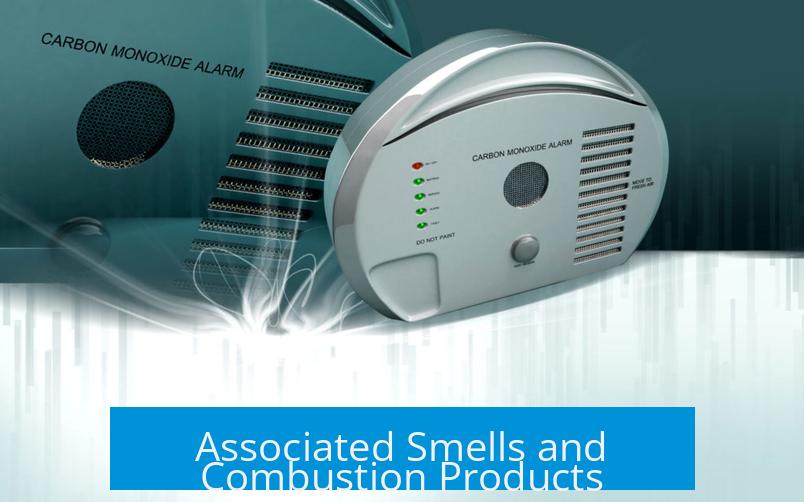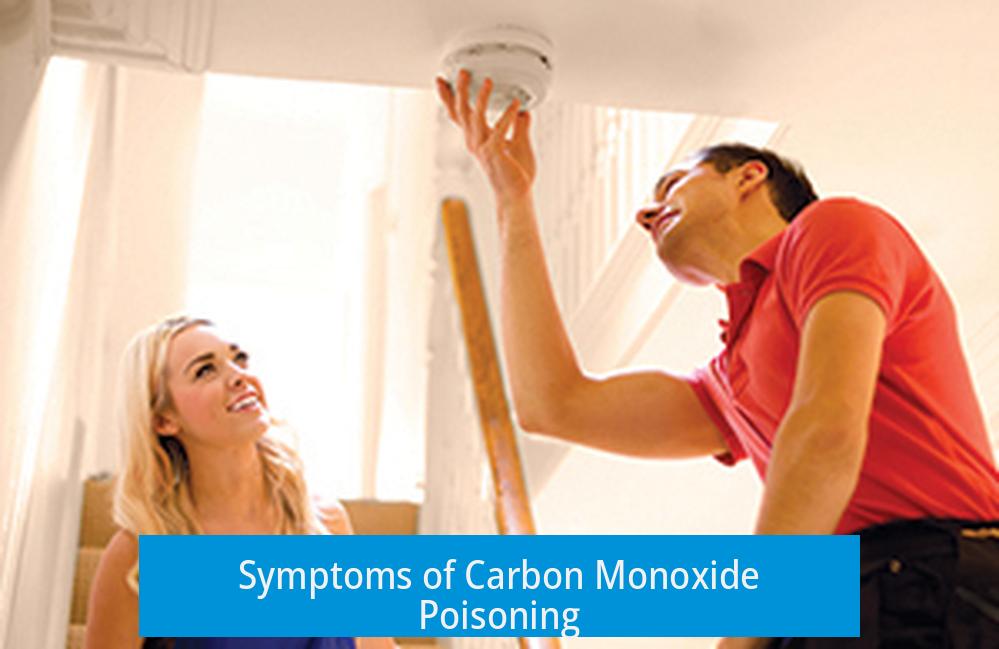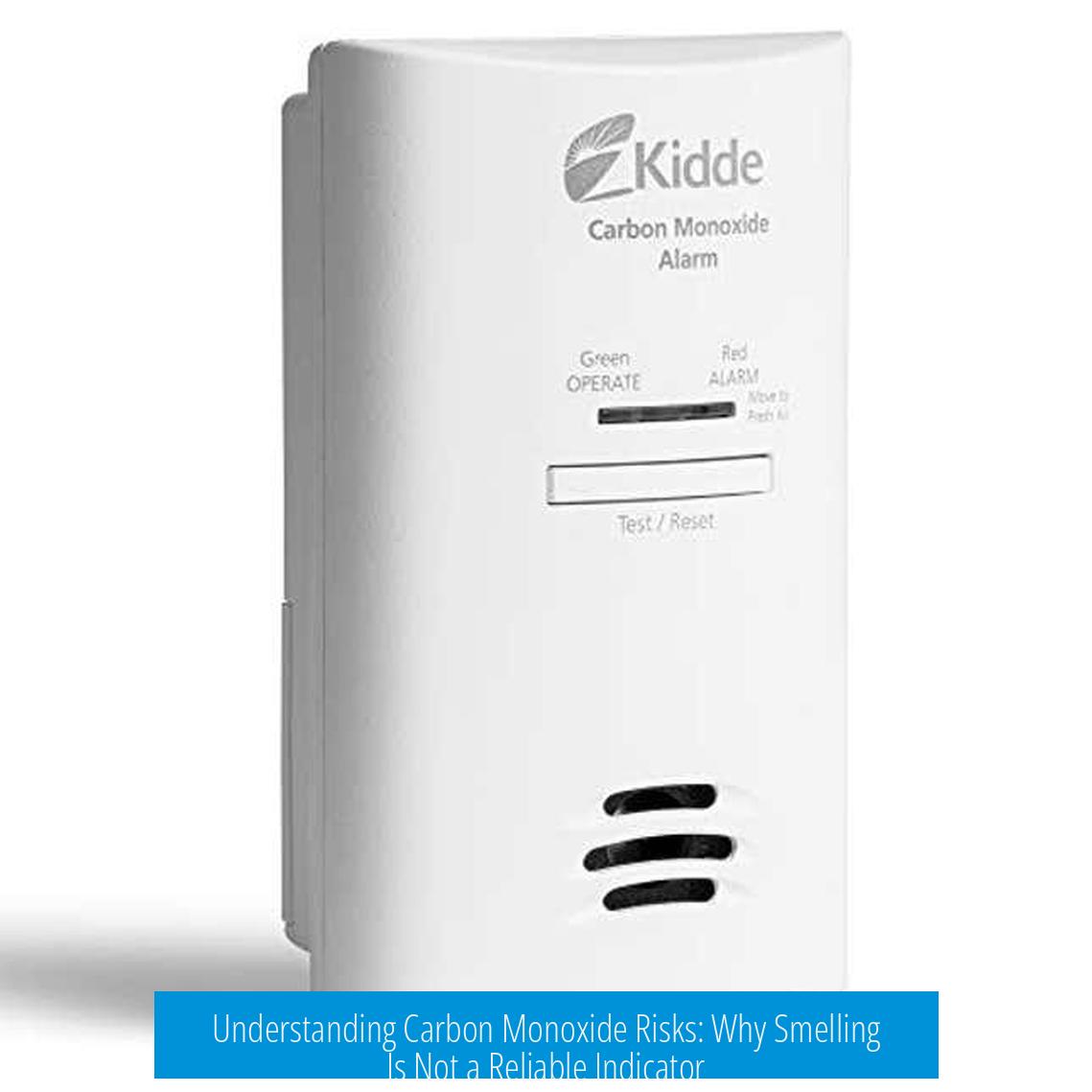Understanding the Teacher’s Statement: “We Have a Carbon Monoxide Leak, I Can SMELL It”

Carbon monoxide (CO) is an odorless, colorless gas and cannot be detected by smell. The teacher’s claim of smelling CO directly is scientifically incorrect and reflects a common misconception.
Carbon monoxide poisoning is dangerous because it lacks sensory warning signs like an odor. People often confuse associated combustion smells or symptoms with the actual presence of CO. This article clarifies the nature of CO, explains the inaccuracies behind the statement, discusses related safety and detection measures, and highlights proper response protocols.
The Nature of Carbon Monoxide
Carbon monoxide is a product of incomplete combustion of carbon-containing fuels such as gas, wood, or coal. Its critical characteristic is that it is odorless and colorless.
- CO molecules do not interact with odor receptors in the human nose.
- Basic science education confirms that CO itself has no smell.
- Any detectable odors often come from accompanying gases or particulates produced during combustion, not the CO itself.
For example, in cases of faulty appliances or backdrafting flues, sulfur-containing compounds or partially combusted fuel particles may emit a distinct “rotten egg” or sulfuric smell. This confusion leads some people to think they are smelling CO.
Associated Smells and Combustion Products

While pure carbon monoxide is odorless, gas leaks from combustion sources often carry smells from unburned fuel gases or related pollutants. Examples include:
- Hydrogen sulfide, which smells like rotten eggs.
- Formaldehyde or other aldehydes from incomplete combustion.
- Smoke or soot particulates that create a smoky or chemical odor.
Because these substances accompany a CO leak at times, an individual may notice a strange odor and wrongly attribute it directly to CO.
Misconceptions Around Smelling CO
The statement “I can smell carbon monoxide” is factually wrong. This misconception can be dangerous, as it creates a false sense of security or incorrect emergency responses.
- Many people mistakenly believe they can detect CO through smell.
- Some educators or individuals may unintentionally spread this misinformation.
- In professional safety disciplines, such remarks are viewed as irresponsible due to the risks involved.
Smelling combustion odors should prompt investigation, but they are not reliable indicators of CO presence. CO is best detected with specialized sensors.
Symptoms of Carbon Monoxide Poisoning

Since CO is odorless, recognition depends on physical symptoms and detection devices. Symptoms usually result from CO binding to hemoglobin in the blood, impairing oxygen transport.
- Early signs include headache, dizziness, nausea, and confusion.
- Visual disturbances such as seeing “stars” or light spots can occur.
- Faintness, fatigue, and shortness of breath may also manifest.
Individuals familiar with these symptoms may recognize them as alarm signals to leave the area immediately.
Experiences detail a gradual onset of symptoms in enclosed spaces with combustion sources, such as woodstoves or vehicles. Prompt ventilation and fresh air are the best immediate remedies.
Why Smell Is Ineffective for CO Detection
Detecting CO by smell is impossible because:
- CO molecules do not stimulate olfactory sensors.
- Even small amounts bind rapidly to hemoglobin, depriving tissues of oxygen before one could consciously detect any unusual smell.
- By the time symptoms manifest, poisoning may already be at a dangerous level.
Therefore, relying on smell delays timely recognition and increases the risk of severe health outcomes.
Proper Handling and Safety Measures for CO Leaks

When a CO leak is suspected or detected, appropriate safety protocols must be followed.
- Immediately evacuate the area and seek fresh air.
- Do not return to the space until it is declared safe by professionals.
- Use certified CO detectors to monitor the environment continuously.
- Notify emergency services or qualified technicians to inspect and remediate the source of the leak.
Leaving notes or relying on vague warnings is insufficient and potentially harmful. Because CO gas can spread easily in open or unsealed areas, containment and clear communication are essential.
Inappropriate Advice and Real-Life Risks
Some incidents have shown improper handling of suspected CO leaks, such as directing individuals toward a contaminated room or posting unprofessional warnings like sticky notes. This approach risks increased exposure.
Real-world examples highlight the dangers:
| Scenario | Outcome |
|---|---|
| Friends detect sickly sweet smell in RV, avoid sleeping inside. | Escape possible fatal CO poisoning as the odor came from combustion products, not CO itself. |
| Individual using woodgas stove in shed experiences headache and faintness. | Recognized symptoms prompt opening door and ventilation, preventing severe poisoning. |
These examples reinforce that physical symptoms and environmental monitoring, not odors, indicate CO presence.
Summary of Key Takeaways

- Carbon monoxide is odorless and cannot be smelled under any conditions.
- Any odors during CO leaks usually come from other combustion byproducts, not CO itself.
- Physical symptoms like headache and dizziness serve as early warning signs, but reliance on symptoms carries risks.
- Proper detection requires specialized CO sensors and immediate evacuation from suspected leak areas.
- Misleading statements about smelling CO can cause dangerous misjudgments and should be avoided.
Teacher said, “We have a carbon monoxide leak, I can SMELL it.” — Let’s Break That Down
First off: Carbon monoxide (CO) is odorless. That means when a teacher says, “I can smell the CO,” they’re off the mark. In truth, you can’t smell carbon monoxide at all. If you think you are, you’re probably detecting something else. But how did this misconception pop up? And why does it matter?
Let’s dive into the facts behind CO, why smelling it is basically impossible, and what you should actually watch for if a leak happens. Spoiler: Your nose isn’t a reliable CO detector, but your body might give you clues!
Why You Really Can’t Smell CO

Carbon monoxide is a sneaky gas. It’s invisible and tasteless, too, but *most importantly* it has no smell. Experts and elementary science classes agree: CO is totally odorless. So that teacher’s claim? Well, they’re not just mistaken, it’s downright irresponsible. You don’t want to rely on your nose when CO is involved—it doesn’t work.
So how do people get confused? Sometimes, a leak might come from a faulty furnace or a backdrafting flue. These things often release other combustion products that do have a smell, often sulfur-like or rotten-egg-ish. That’s not carbon monoxide itself, but gases made alongside it. So, if your teacher “smelled something,” it’s likely these other fumes, not CO.
Smell Isn’t Your Friend Here, But Symptoms Might Be
Since you can’t sniff out CO, how do you know if you’ve got a leak? Your body might offer subtle hints. Early symptoms of CO poisoning include headaches, dizziness, a bit of nausea, and tiredness.
“I was starting to get a slight headache and felt somewhat faint and sleepy,” one person reported while using a woodgas stove in a closed shed. Opening a door and getting fresh air helped.
Another described sensations like seeing “stars”—that woozy-eyed dizziness. If you’re alert, noticing these signs is your cue to evacuate immediately. Remember: your body doesn’t lie, even if your nose does.
Dangerous Missteps: What Not To Do When CO Is Suspected
Here’s where things get dicey. Suppose the teacher leaves a sticky note: “Poison gas. Don’t enter.” Leaving a note might seem helpful but it’s a poor safety protocol. Labs and classrooms aren’t airtight. The gas can spread beyond one room, making the whole area dangerous. Relying on notes rather than alarms or evacuations puts everyone at risk.
And get this—sending students toward or even near the suspected leak, like telling them to “go to room 203” when that’s the source area, is the opposite of smart. Industry pros call that “bad advice.”
Proper response? Evacuate immediately. Call emergency services. Use CO detectors. It’s that simple.
Real World: When Smells and CO Collide
Want a real-life example? Picture a group of friends camping in an RV. One night, someone notices a weird sickly sweet smell. They decide to skip sleeping inside and crash in the car instead.
Next morning, the friends inside the RV suffered symptoms from CO poisoning. Turns out, the odor was from *other* combustion gases, not CO itself. CO silently built up, dangerously close to fatal levels.
This story reinforces a crucial point: Don’t rely on smells to warn you about CO. It can be silently toxic, even at very low concentrations.
The Bigger Picture: Why Educators Must Get This Right
Teachers are leaders and role models. When an educator says something confidently—like “I smell carbon monoxide”—students naturally pay attention. But spreading misinformation can lead to dangerous delays in evacuations or proper responses.
Imagine a class hearing “CO leak detected because I can smell it.” They might think it’s safe to ignore alarms, or worse, not take symptoms seriously. This false sense of security could cost lives.
Clear, accurate guidance matters. And the key takeaway is this: CO is a silent threat that needs specialized detection devices, not your nose.
So What’s the Best Practice?
- Install reliable carbon monoxide detectors in homes, schools, and workplaces.
- If you notice headaches, dizziness, or feel faint near fuel-burning appliances, get fresh air immediately.
- Trust alarms and symptoms, not smells.
- Never direct people toward the suspected leak area—always evacuate in the opposite direction.
- Educate staff and students about CO’s odorless nature and symptom recognition.
Putting It All Together — Why This Matters
We’ve unpacked the myth: You can’t smell carbon monoxide. Any “smell” associated with a leak is from other combustion products or unrelated odors.
Ignoring this can have real consequences. Relying on scent risks exposure, illness, or even death. Being aware of symptoms and taking safety protocols seriously saves lives.
Next time you hear, “We have a carbon monoxide leak, I can SMELL it,” you’ll know better. Teach others, too. Because in the game of carbon monoxide, your nose is just not invited.
Quick Recap
| Fact | What It Means |
|---|---|
| CO has no smell | Never try to detect CO by nose alone; it silently poisons you. |
| Other combustion products may smell | If you smell sulfur or “rotten eggs,” evacuate. It might hint at a combustion problem. |
| Symptoms matter | Headaches, dizziness, faintness are early warnings to get fresh air now. |
| Sticky notes and poor advice | Don’t leave notes where people congregate near leaks; call professionals immediately. |
| Use detectors | CO alarms are your best defense. They can ‘smell’ it for you. |
Stay informed, stay safe, and don’t trust your nose when it comes to carbon monoxide.
Can you smell carbon monoxide if there is a leak?
No. Carbon monoxide (CO) is odorless and invisible. You cannot detect it by smell. Sometimes, other combustion gases near a CO leak might have a faint sulfur or smoke smell, but CO itself has no odor.
Why did the teacher say they could smell a carbon monoxide leak?
The teacher likely confused other combustion odors or fumes with the CO itself. Saying “I can smell it” is inaccurate and could cause false security or panic. Proper CO detection relies on alarms or symptoms, not smell.
What are the real signs of carbon monoxide poisoning?
- Headache
- Dizziness or faintness
- Sleepiness or nausea
- Eye discomfort or difficulty concentrating
These symptoms signal you need to leave the area immediately and get fresh air.
Is it safe to reuse a room or space if a CO leak is suspected?
No. CO can spread easily in an enclosed space. Simply leaving a note is unsafe. Proper ventilation and professional inspection are required before reentering.
How should a carbon monoxide leak be detected and handled?
Use a certified CO detector or alarm. If symptoms appear or a leak is suspected, evacuate immediately and call emergency services. Do not rely on odor or casual checks.





Leave a Comment